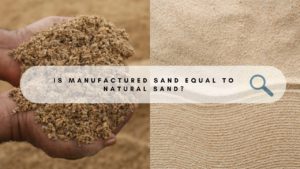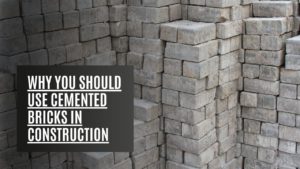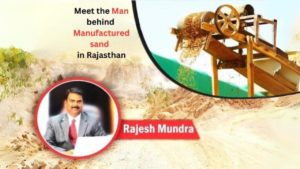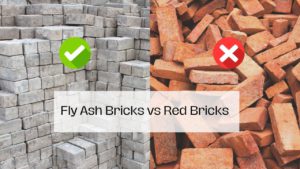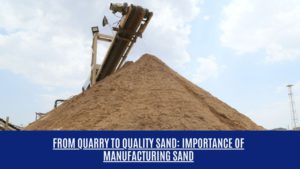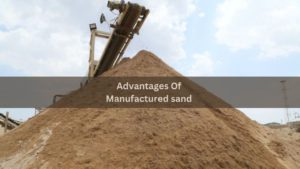Introduction
The construction industry is constantly evolving, with a growing focus on cost-effective and sustainable materials. Fly ash bricks have emerged as a game-changer in modern construction, offering affordable, durable, and eco-friendly solutions for builders and contractors.
Made from industrial waste such as fly ash (a byproduct of coal combustion), these bricks provide significant cost savings while maintaining superior strength and durability compared to traditional clay bricks.
In this blog, we’ll explore how fly ash bricks cut costs without sacrificing quality, making them the preferred choice for energy-efficient and sustainable construction.
What Are Fly Ash Bricks?
Fly ash bricks are eco-friendly alternatives to traditional clay bricks, made from fly ash, cement, sand, and water. They are cured under high pressure and temperature instead of kiln firing, reducing energy consumption and environmental impact.
These bricks offer better strength, durability, and uniformity. With lower water absorption and excellent thermal insulation, they provide an efficient and sustainable choice for modern construction.
The table below compares fly ash bricks with traditional clay bricks based on key factors like raw materials, strength, durability, and environmental impact.
Comparison: Fly Ash Bricks vs. Traditional Clay Bricks
| Feature | Fly Ash Bricks | Traditional Clay Bricks |
|---|---|---|
| Raw Materials | Fly ash, cement, sand | Clay soil, topsoil |
| Manufacturing Process | Pressed & cured under controlled conditions | Fired in kilns, requiring high-energy |
| Strength & Durability | Higher compressive strength (7-10 MPa) | Lower compressive strength (3-5 MPa) |
| Thermal Insulation | Keeps interiors cooler | Retains more heat |
| Environmental Impact | Uses industrial waste, reduces carbon footprint | Destroys topsoil, emits pollutants |
| Water Absorption | Lower (10-15%) | Higher (15-25%) |
Fly ash bricks outperform clay bricks in multiple ways, making them an ideal cost-effective, and sustainable choice for modern construction.
Cost-Saving Aspects of Fly Ash Bricks
Fly ash bricks offer an economical and sustainable alternative to traditional clay bricks, helping builders cut costs without compromising on quality. Here’s how they contribute to cost savings:
1. Lower Raw Material Costs
One of the biggest advantages of fly ash bricks is their affordable raw materials. Since fly ash is a byproduct of coal-fired power plants, it is readily available at low or no cost. This drastically reduces the overall manufacturing expenses, making these bricks cheaper than traditional clay bricks.
2. Reduced Construction Costs
- Higher Strength – Fly ash bricks have a higher compressive strength, meaning fewer bricks are required per unit of construction.
- Uniform Shape & Size – Their precise dimensions reduce mortar consumption by up to 20-30%.
- Smoother Surface – Requires less plastering and finishing, saving on materials and labor costs.
3. Energy Efficiency in Production
Unlike clay bricks, which are fired in kilns, ash bricks are cured using steam or autoclaving, which consumes less energy. This not only reduces production costs but also makes them a greener alternative to traditional bricks.
4. Minimal Breakage & Wastage
Fly ash bricks are stronger and more durable, which means:
✔ Lower breakage rates during transportation and handling.
✔ Less material wastage at the construction site.
✔ Fewer replacements over time, reducing long-term costs.
By choosing fly ash bricks, builders can achieve significant savings in raw materials, labor, and maintenance costs.
Quality Advantages of Fly Ash Bricks
While cost savings are important, quality cannot be compromised. Here’s why fly ash bricks are an excellent investment for any construction project.
1. Superior Strength & Durability
Fly ash bricks are known for their exceptional strength and long-lasting performance, making them a reliable choice for construction. Their robust composition ensures better load-bearing capacity and resistance to wear and tear over time.
- Higher Compressive Strength: With a compressive strength of 7-10 MPa, these bricks are stronger than traditional clay bricks, providing better resistance to damage and load-bearing stress.
- Non-Porous Surface: The low porosity prevents water damage, ensuring long-lasting structural stability and reducing maintenance costs.
2. Thermal Insulation & Energy Savings
Fly ash bricks offer excellent thermal insulation, helping maintain comfortable indoor temperatures throughout the year. This reduces dependence on air conditioning and heating, leading to significant energy savings and lower electricity costs.
- Low Thermal Conductivity: Helps keep buildings cooler in summer and warmer in winter, reducing reliance on artificial heating and cooling.
- Lower Energy Consumption: Reduced electricity bills due to improved insulation, leading to long-term cost savings.
3. Eco-Friendliness & Sustainability
Fly ash bricks are considered green building materials because of their minimal environmental impact. Their production process consumes less energy and emits fewer greenhouse gases, helping to reduce the overall carbon footprint and making them a more sustainable choice for construction.
Additionally, fly ash bricks offer several environmental benefits that contribute to sustainable construction:
- Prevents Topsoil Depletion: No clay excavation is required to preserve agricultural land.
- Reduces Air Pollution: Unlike traditional bricks, these do not require burning in kilns, significantly cutting down carbon emissions.
- Utilizes Industrial Waste: Fly ash, a byproduct of thermal power plants, is effectively repurposed, reducing landfill waste.
4. Better Finish & Aesthetics
Fly ash bricks have a smooth and uniform surface, reducing the need for excessive plastering and finishing work. Their precise dimensions ensure neat masonry, enhancing the overall visual appeal of the structure.
- Smooth Surface: Requires less plastering, speeding up construction and lowering costs.
- Uniform Size & Shape: Ensures neater masonry and better visual appeal.
- Lighter Weight: Easier to transport and handle, reducing labor effort and increasing work efficiency.
Real-Life Applications & Case Studies
Fly ash bricks are widely used in residential, commercial, and infrastructure projects due to their cost-effectiveness and durability. Many builders and government agencies prefer them for sustainable construction, reducing expenses while ensuring long-lasting structures.
Residential Construction
A builder in Delhi switched to fly ash bricks for a multi-story residential project and reported:
- 30% savings on mortar and plastering costs.
- Lower cooling expenses due to better thermal insulation.
Commercial & Industrial Buildings
A factory in Bangalore used these bricks for their warehouse and experienced:
- 20% reduction in overall material costs.
- Faster construction due to uniform brick sizes leads to lower labor costs.
Government & Infrastructure Projects
Cities like Mumbai and Chennai have mandated the use of fly ash bricks in public infrastructure projects due to their sustainability and cost-efficiency.
Conclusion
The construction industry is rapidly adopting sustainable and cost-effective materials, and fly ash bricks stand out as a game-changer. Their superior strength, durability, and thermal insulation make them an excellent choice for modern construction. Builders can benefit from reduced costs while contributing to a greener future.
With proven benefits in real-world applications, fly ash bricks ensure long-term savings and structural integrity, making them a smart investment for any project.
Build with Quality & Sustainability – Choose Raj Mineral
Looking for high-quality construction materials in Udaipur? Raj Mineral offers premium Fly Ash Bricks, Interlocking Paver Blocks, Crusher Stone Grit, and M-Sand to meet all your construction needs.
📞 Contact Raj Mineral today and build a strong, sustainable future with the best materials!





